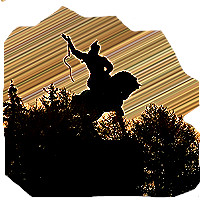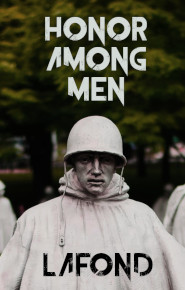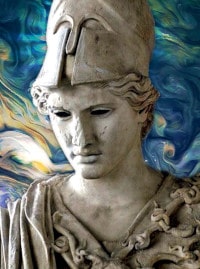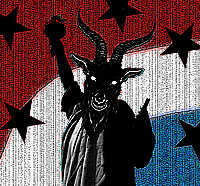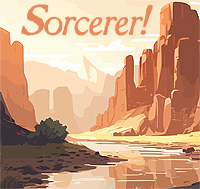Half the men I know are flocking to theaters like my mother and her girlfriends screaming for the Beetles during their first American tour, to see what?
A shield, that’s right—to see the super soldier soap opera Captain America Civil War.
Steven Pressfield once wrote a brilliant and accurate depiction of the Spartan band that died at the Hot Gates, in Gates of Fire, and did not get a movie deal out of it or get on the bestseller lists, like he did for the Legend of Bagger Vance. A few years later a comic artist threw in a bunch of ninja bullshit, got creative with the atmosphere and broke the bank with 300, a graphic rip-off of Pressfield’s novel.
One Wednesday, on his website, where he offers advice to aspiring writers, Steven discussed artifice, which moved me to write the reprehensible article Gay Rapists Of The Caribbean. Steven’s point was that artifice sells and underlying meaning does not. In other words, he was telling lesser writers that text sells and the subtext does not.
It is so. For instance, Robert E. Howard’s best selling works had the most artifice, the strongest gross texts. This might seem proof to some that Howard did not write a subtext. Indeed, Howard’s artifice, in the form of his two most popular creations, is so strong, that mainstream readers refuse to even look at it, seeing as they do, in Conan the Barbarian and Solomon Kane, something more suited for a comic book. Indeed, both of these characters have had many more lives in comic form than in prose.
But if this is all there was to Howard’s creations, why do old men reread the stories they read in their youth and see something more than they did as boys?
Why has Howard, in particular, been so posthumously successful on the commercial and mythic level, with many men in the masculinity movement pointing to his work as a survival of another, more manly, age?
Artifice
The rifle in the movie Winchester ‘73 [maybe it was ‘74], a movie about a gun, is the artifice, the text of the story. The story of the many men dying to possess this prize gun is the myth, the subtext of the story. This movie was an exception as the artifice was so deeply interwoven with the myth, the text with the subtext, in much the way that our more primitive ancestors vested myth in the artifice of legend, in Author’s sword Excalibur, in Liver-Eater Johnson’s double moccasins, in the hair of Samson. Hence these stories set the standard that Howard met with Conan and Kane.
For the most part successful attention to artifice leads to a dreary run of sequels, such as the James Bond series, entirely vested in gadgetry and affectation, which have appeal to the adult viewer only in so far as the adolescent in him remains to be accessed via the conventions of the movie. When the version of Bond played by Daniel Craig as a conflicted psychopath was brought to the public, the franchise was reinvigorated by the infusion of subtextual, mythic elements, aspects of the timeless hero tales of old.
The norm is Superman’s cape, Captain America’s shield, the Lone Ranger’s Mask, The Terminator's sunglasses, Batman’s utility belt… These things become such crutches that they are to the hero tale what Dolly Parton’s breasts were to country music, pleasing in the moment, but not of lasting substance or significance to the living art.
I once found a set of books describing the life of the carnival, written by an old carnival hand. When I moved to purchase them, the dealer began offering me clown noses, clown hats, clown figurines, all of the fluff imagery loved by the people who normally bought these books—just to look at the pictures like children and gawk at freaks. I wanted the books to understand how a carney lived, and that was alien to him and to most. So, there is the reflection—in that little story—of the fact that many people appreciate the artifice and the text but few even see the myth, the subtext. However, as the years, decades, centuries and ages go on, the text is appreciated less and the subtext more, as the text or artifice tends to be more materially specific to the age of its creation, and hence the short life of popular works like penny dreadfulls and dime novels, and the long lives of Dracula and Moby Dick.
We see in this the fate of two similar characters created by writers of the same era, Tarzan by Edgar Rice Burroughs and Conan by Robert E. Howard. Tarzan exceeded Conan in popularity by leaps and bounds in his time. But today, the Conan character has finally inched ahead, and will continue to do so, due to the deeper subtext of Howard’s creation.
Before moving to Conan and Kane as artifice/myth studies, let’s consider one successful modern action franchise that relies heavily on artifice but has stayed marketable over two generations of moviegoers due to the mythic nature of the story. The movie Predator, was the movie I generally evoked when trying to describe what reading a Conan story was like, with the actor portraying the nameless [he had a name but it meant nothing and I challenge you to remember it without checking] commando facing the alien hunter being played more Conan-like than the same actor played Conan.
The most recent in this long lived series was as good as the first, because—though it relied on the artifice of the Rastafarian-haired-insect-faced pro-wrestler with the nuclear wrist watch—it maintained the myth, the subtext, which is an ancient one: the Company of doomed heroes, retold in Seven Against Thebes, Seven Samurai, The Magnificent Seven, The Dirty Dozen, and other gripping adventure tales.
The Mythic Artifice of Conan and Kane
Conan shared with Tarzan the loincloth, a sign of savagery. He adventures in a world in which seeing another man in a loincloth is a sign that two wolves have now met amongst the dogs of Civilization.
Like Tarzan, Conan has long hair. But Conan’s hair is square cut and banded, a symbol of his self-discipline, a savage clawing the ladder of Man’s Ascent, ultimately to kingship, rather than a conflicted retrograde soul like Tarzan lording it over the beasts from his fallen place.
Conan, like Tarzan, is a Nordic type tanned by the sun, indicating a European unafraid to mix it up with the more primitive races on their level. But Conan does not just have the steely eyes of Tarzan, but somber, fiery, baleful eyes that hint at volcanic rages. Where Tarzan can lapse into indolent primal bliss, Conan is driven by his rages and melancholies.
Tarzan goes barefoot, creating a likable Jungle Book-inspired fellow, with a strong element of the Rousseauian “Noble savage.” Conan, however, is usually depicted in high-strapped sandals, and will adopt bare feet, moccasins or boots to fit the circumstances, marking him as that character which is the “fateful footstep” of an age, the man who might “tread the jeweled kingdoms of the world under his sandaled feet." So, rather than a Noble savage or realist in the brutal Hobbesian tradition, or a deadpan James Bond using gadgetry and affectation to mange his way through peril, in the sandaled Conan you have the bloody hand of Fate treading rudely, though according to a strict code of behavior, through a somewhat Hoobesian world where life is nasty, brutish and short.
With both the Conan and Tarzan characters the reader sees an attempt to combine the wild-man [Enkidu] and the hero-king [Gilgamesh]. ERB effected this by having Tarzan switch roles when necessary, sometimes conjoining the two. Howard, though, has constructed the perfect conflicted hero, the hero-king who cannot abandon his wild nature as Gilgamesh did, but maintains his savage masculinity as a well to dip into when faced with the supernatural horrors that Tarzan never has to face and which Gilgamesh ultimately bowed to after losing his companion Enkidu [his wild side]. Conan is his own Talisman, his soul his Excalibur.
Where Conan is much more dynamic on the face, striking in his barbarity even among barbarians, Solomon Kane earns his place in the hero’s spotlight due to his stunningly conflicted nature, which is presented in the dichotomous aspects of his artifice and myth. Where Conan is essentially the wild-man and the hero-king in one—not such a mythic stretch, and does not set up a conflict of nature at all, as he is embodying the roles of what is in traditional myth two brother-like characters, such as Enkidu and Gilgamesh—Kane is the combination of opposites.
Kane is dressed like a Puritan, indeed is a Puritan, a member of a Christian sect that emphatically does not glorify the warrior. The Puritan Roundheads may have won the English Civil War [this would be a lifetime after Kane’s time, as he was conceived as contemporary of Drake, which would have marked him as among the earliest if his sect] but they still did not glorify the warrior. The victory belonged to God and God alone, man merely his witless pawn. Kane comes from the period when the “Christian Soldier” ideal was forming in the Anglo mind.
In an Old West setting Kane would be a Preacher/Gunfighter, like the Eastwood character in the movie Pale Rider, or, in some of the darker tales, more like the Eastwood character in the movie High Plains Drifter. As Conan evokes the conquering hand of Fate as tribes and civilizations rise and fall, Kane is the moral version of the hand of Fate, an avenging figure too dark to be described as an angel. Dressed like a Congregationalist pilgrim and armed like a swashbuckling sea wolf, Kane’s artifice itself is too dichotomous to ignore and brilliantly serves to put the mythic aspect of the character in constant contrast, reflecting darkly on his inner turmoil.
In terms of artifice alone, Conan and Kane, as characters, are commercially brilliant literary creations. Yet their stories retain the sublime mythos implicit in such less marketable fictive heroes as Kull and Bran Mak Morn. Robert E. Howard was a genius of artifice-infused yarn spinning and mythically inspired storytelling, and in the tales of Conan and Kane he has both of these literary pistons firing at the same high rate, just as intertwined in the fabric of the narrative as the two barbarians he described advancing across a corpse-strewn battlefield to do heroic combat, “As ghosts might come to a tryst through the shambles of a world.”


